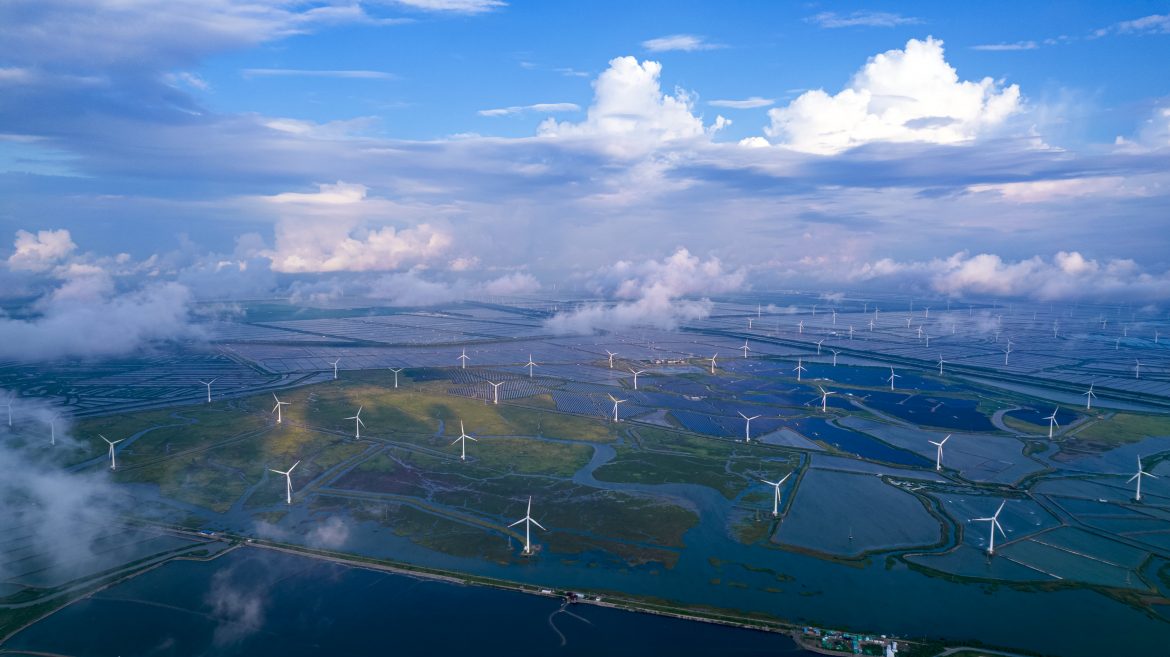The latest Global Electricity Review released on Wednesday by independent energy think-tank Ember shows that wind and solar reached a record 12% share of global electricity generation last year, up from 10% in 2021.
The progress made from generating electricity from wind and solar is expected to launch the world into a new era of falling fossil generation and power sector emissions from 2023, the fourth annual report found.
“In this decisive decade for the climate, it is the beginning of the end of the fossil age,” Małgorzata Wiatros-Motyka, report author and Ember’s electricity analyst was qouted as saying. “We are entering the clean power era.”
Electricity data from 2022 in 78 countries, representing 93% of global electricity demand were presented by the report which found that the share of wind in global electricity generation reached 7.6% in 2022, up from 6.6% in the previous year while electricity generation from wind rose by 17% year-on-year.
Solar’s share was 4.5% in the world’s power output last year, up from 3.7% in 2021 as it is now the fastest-growing source of electricity for the 18th year in a row, growing by 24% year-on-year.
The growth in solar power’s share across the world was driven by the rise in China, accounting for 37% of the global increase, while the growth in US solar generation accounted for 17% of the global rise.
Over 60 countries now generate more than 10% of their electricity from wind and solar, the data reveals.
Read also: UK accused of ‘backward step’ for axing top climate diplomat role
The rise in electricity generation from wind and solar last year met 80% of the increase in global electricity demand, which reached 2.5% compared to the previous year.
China generated the most electricity from solar last year with 418 terawatt-hours, or 4.7% of its electricity from solar while Chile had the largest share of solar in its electricity output with 17% last year, with the Netherlands following with 15% and a 13% solar share in their electricity mix.
China was also the biggest generator of wind power in the world, with a 9.3% wind share in its electricity mix, while Denmark had the largest wind generation by percentage share at 55% in 2022.
The share of wind and solar in the European Union stood at 22% last year.
The report found the rise in wind and solar generation limited the increase in coal generation at 1.1% while the share of gas in global electricity generation fell slightly by 0.2% last year, accounting for 22%.
If all the electricity from wind and solar instead came from fossil generation, emissions from the power sector would have been 20% higher last year, Ember calculated.
However, 2022 may be the “peak” of electricity emissions and the final year of fossil power growth, with clean power meeting all demand growth this year, the report forecasts, and said there would be a fall of 0.3% in fossil generation this year, with larger drops in subsequent years as wind and solar deployment accelerates.
“The global renewable share is increasing, but to achieve net zero by 2030, the renewable generation must cater to at least 60% of the total generation from renewables,” said Ajay Mathur, director general of the International Solar Alliance, stressing that the way forward lies in pacing up renewable energy and making renewable energy technology a global public good.
Story was adapted from AA.
